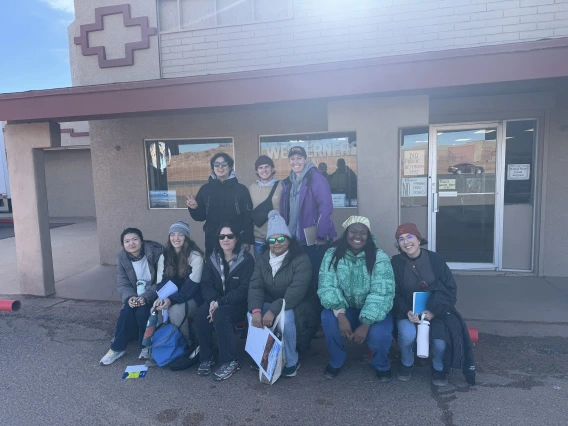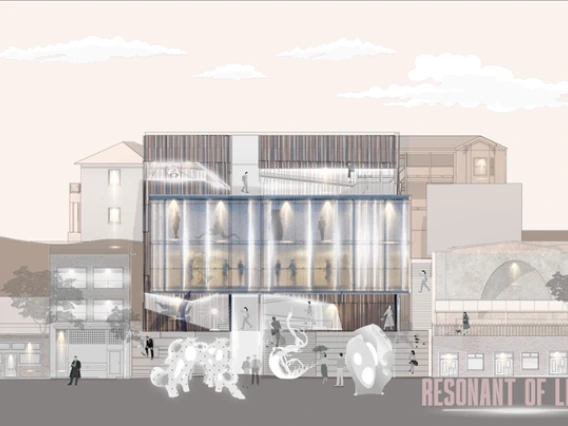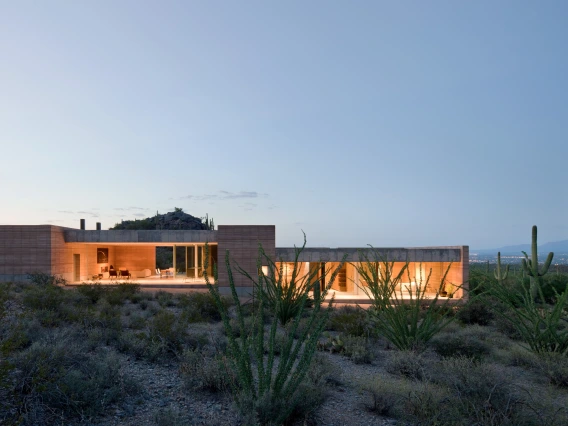First-Year Master of Landscape Architecture Students Find Inspiration and Delight Exploring Southern California
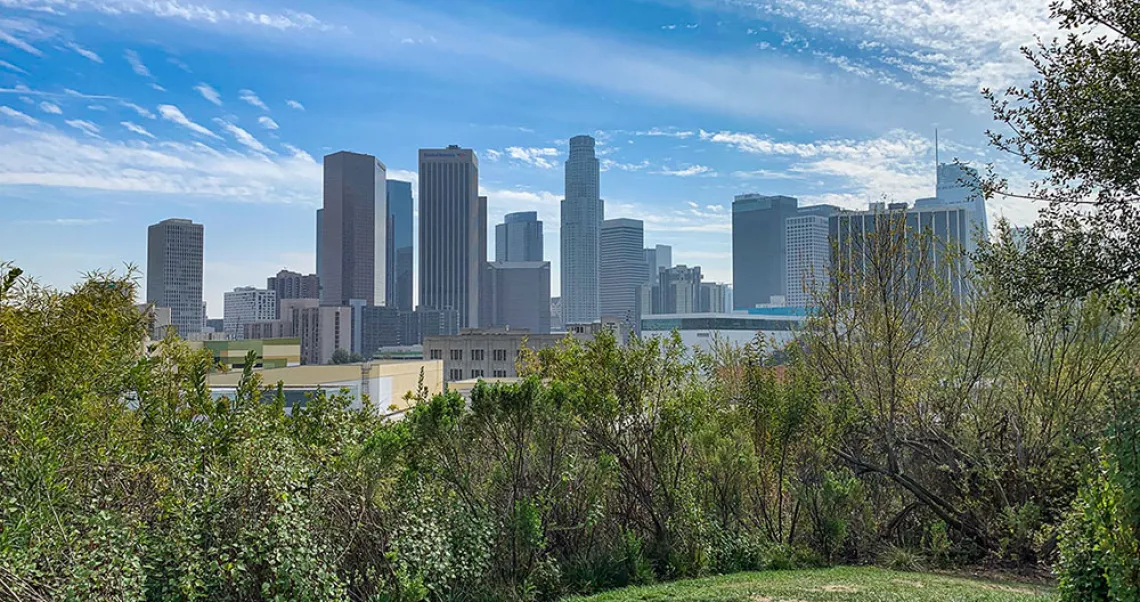
Downtown Los Angeles skyline from Vista Hermosa Park. Photo by Kendra Potter.
Earlier this spring, new Master of Landscape Architecture students found themselves leading walking tours in downtown Los Angeles, teaching fellow students about sites of cultural and architectural significance and even measuring well-articulated elements in designed landscapes.
“That’s me, sizing up a bench!” says Irene Pineda ’22 MLA as she shares a photo of long, curved outdoor seating in Costa Mesa. “The visit to Southern California, where I’m from, was such a remarkable experience, measurements and all. It really opened my eyes in an unexpected and delightful way to sites I’d always taken for granted.”
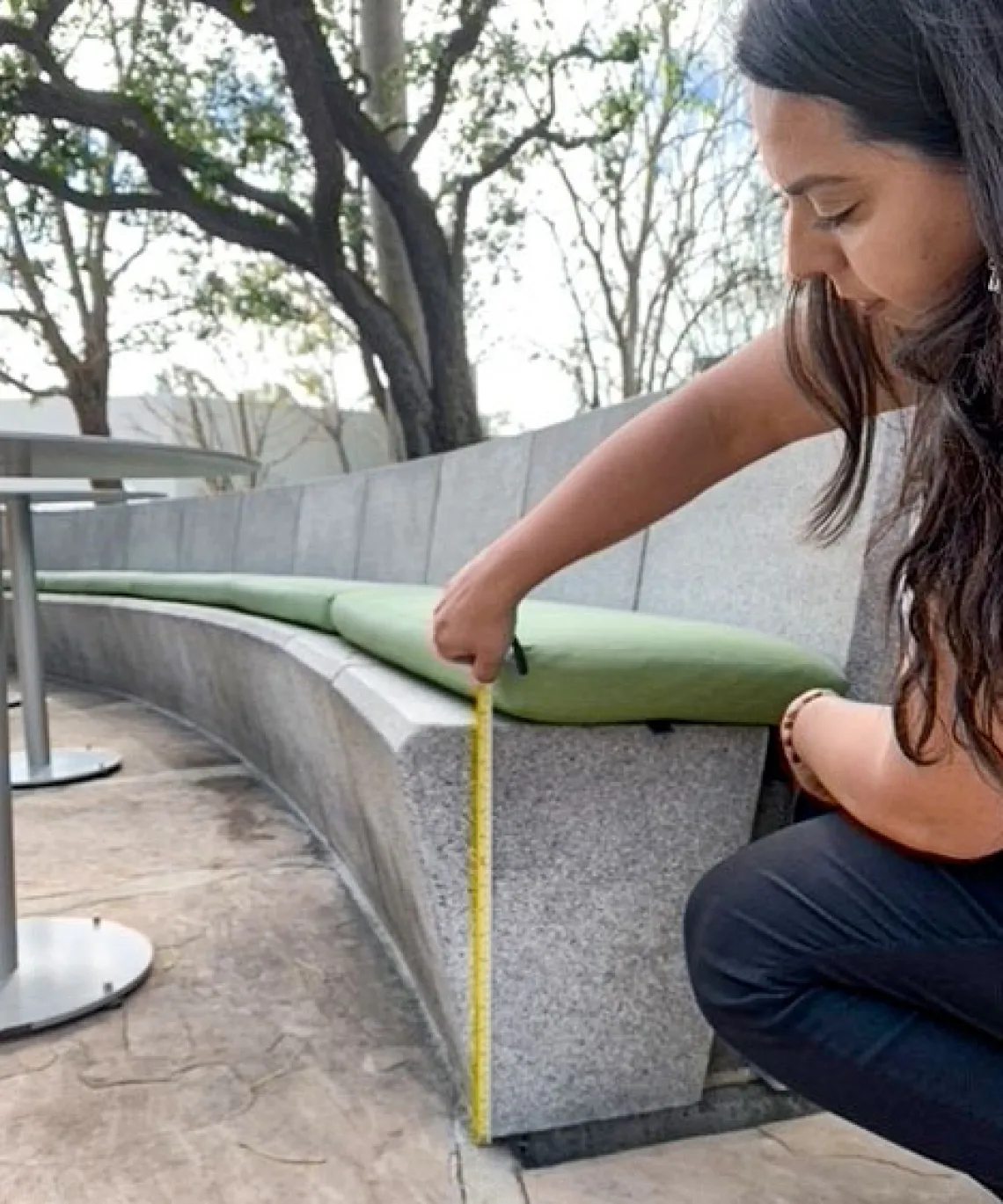
Irene Pineda measures benches around Costa Mesa, California. Photo courtesy Irene Pineda.
Pineda was one of 14 MLA students who visited Southern California under the guidance of Kirk Dimond, assistant professor of landscape architecture in the College of Architecture, Planning and Landscape Architecture at the University of Arizona.
The annual trip is a weeklong excursion where Dimond and students visit a variety of “significant urban landscapes and spaces as well as interesting design firms in the L.A. and San Diego areas,” he says. “We often meet up with alumni and other friends of our landscape architecture program to hear their professional experiences and perspectives of the field.”
For students like Kendra Potter ’22 MLA, the trip is one of the highlights of their first year in CAPLA’s three-year, accredited program. “The Lyle Center for Regenerative Studies at Cal Poly was my favorite site,” she says. “I could have stayed there the whole week doing projects and loved it.”
“Or perhaps it was visiting the site I researched for the tour I lead, because I could finally relate the physical design and structure to what I had only studied and seen in piecemeal photos,” she adds. That site was the Walt Disney Concert Hall, and Potter was “amazed at the size of the structure,” which was designed by Frank Gehry and opened in downtown L.A. in 2003.
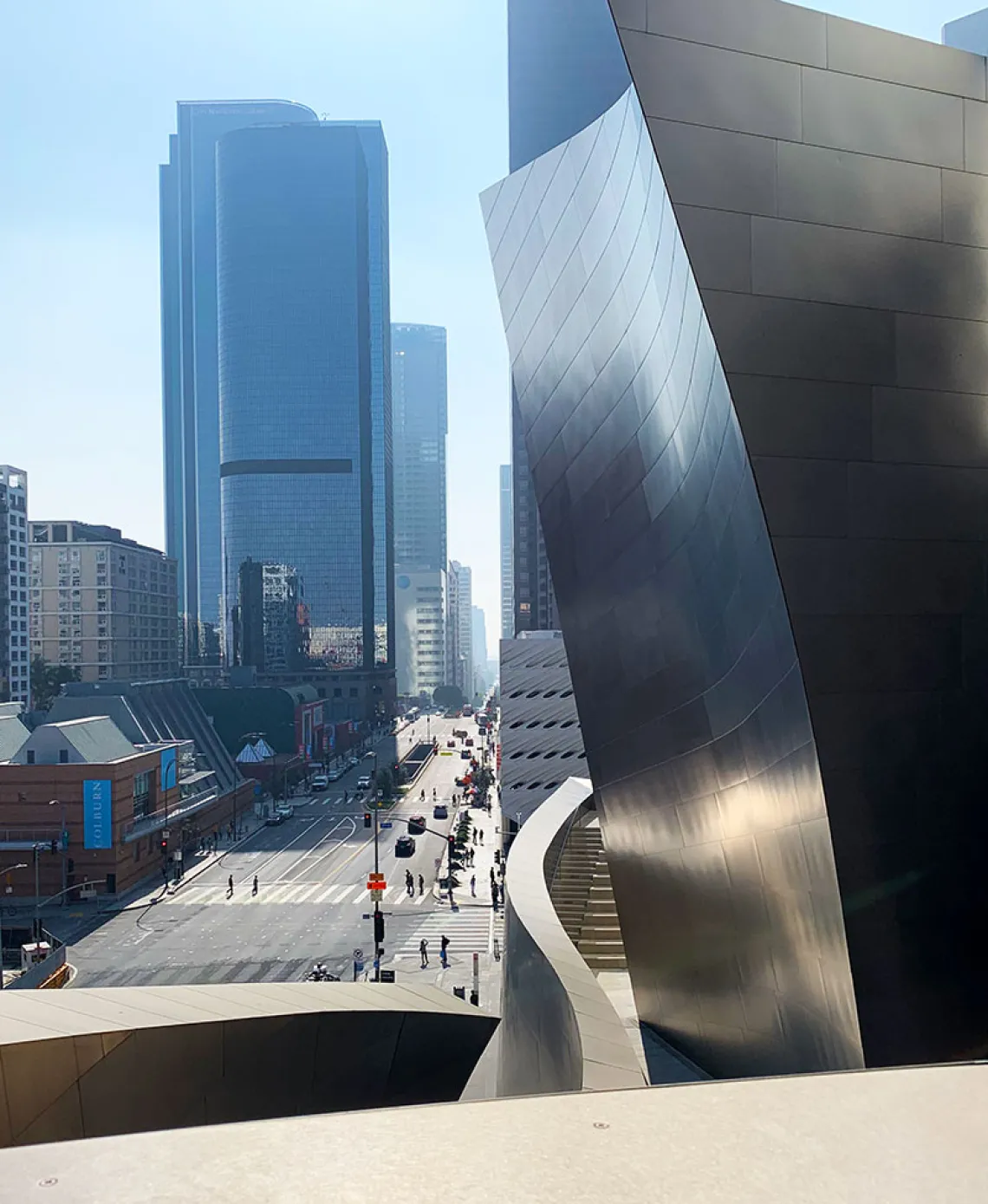
The view from the Walt Disney Concert Hall upper level. Photo by Kendra Potter.
The students visited over 15 significant sites in L.A.’s downtown on a walking tour where they each chose a site to research beforehand and then oriented and toured the group through it.
Pineda chose the Cathedral of Our Lady of the Angels, which was designed by Rafael Moneo and opened in 2002 after six years of construction. “Moneo’s enclosure for the cathedral is intentionally blank and introspective,” she says. “He wanted people to make the effort to penetrate the enclosure to discover the wondrous, light-filled world inside.”
The cathedral’s simplicity is what Potter found most surprising on the trip: “It was not as ornate as I had expected from the outside; it was more segmented inside, with small niches and a much smaller sanctuary than expected.”
Both students appreciated the visits to landscape architecture firms, an integral part of their excursion. “During office visits, students hear of design processes for the firms, and see the same software programs being used as they are learning themselves,” says Dimond.
“I felt starstruck meeting with Studio-MLA,” says Pineda. “At CAPLA we’ve studied a variety of their projects, and being able to observe their team and their work ethic was worth the drive out from Tucson all by itself.”
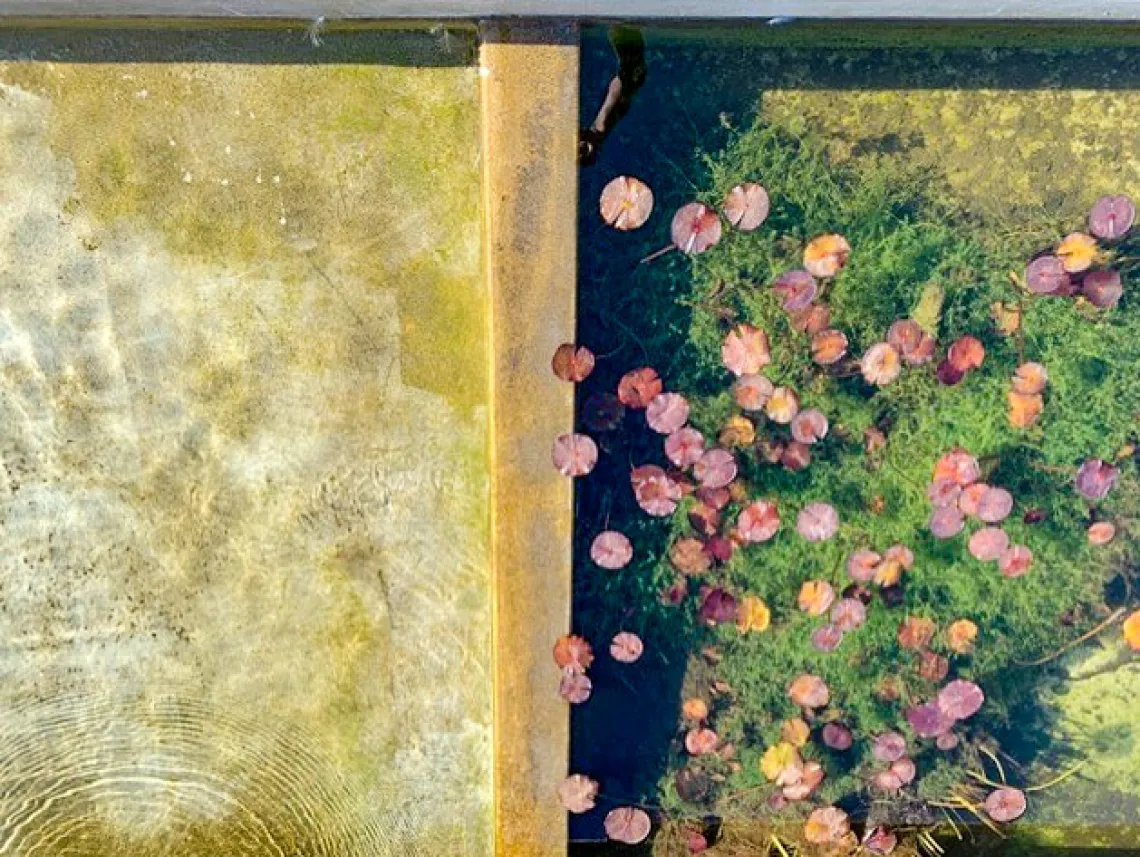
A pond outside of the Santa Monica City Hall. Photo by Irene Pineda.
Potter agrees: “Visiting the professional practices helped me better understand the work environments of our industry, which for me is particularly important since I’m coming from a different career background.”
“I worked in that Southern California urban setting for three years,” adds Pineda. “I really enjoyed sharing my stories and personal perspectives of the sites we visited, and then learn so much more about them.”
And that’s the goal, says Dimond: “The trip reinforces a lot of what the students are working on in class. Many of the sites, such as the Noguchi Garden, Getty Center and Gamble House, as well as works by Peter Walker, Lauri Olin and James Corner, have been discussed in their contemporary landscape architecture and history and theory of landscape architecture courses.
“It’s a wonderful opportunity for the new cohort of students to get a better sense of the exciting field they are embarking on—and on the scale of impact they can make in their own careers.”
Southern California MLA Excursion | Photos by Irene Pineda and Kendra Potter
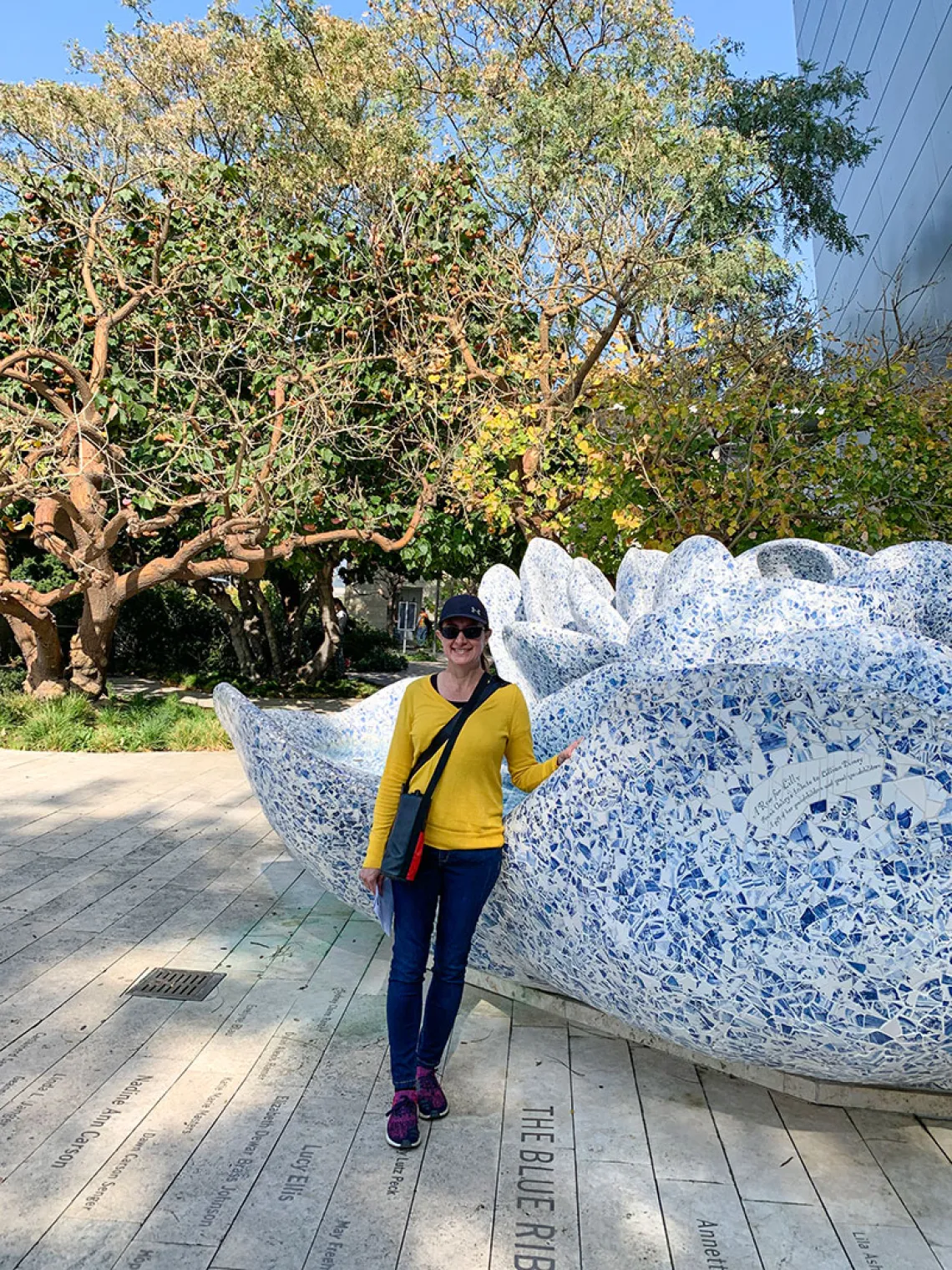
Kentra Potter at the A Rose for Lily Fountain at Walt Disney Concert Hall. Photo courtesy Kendra Potter.
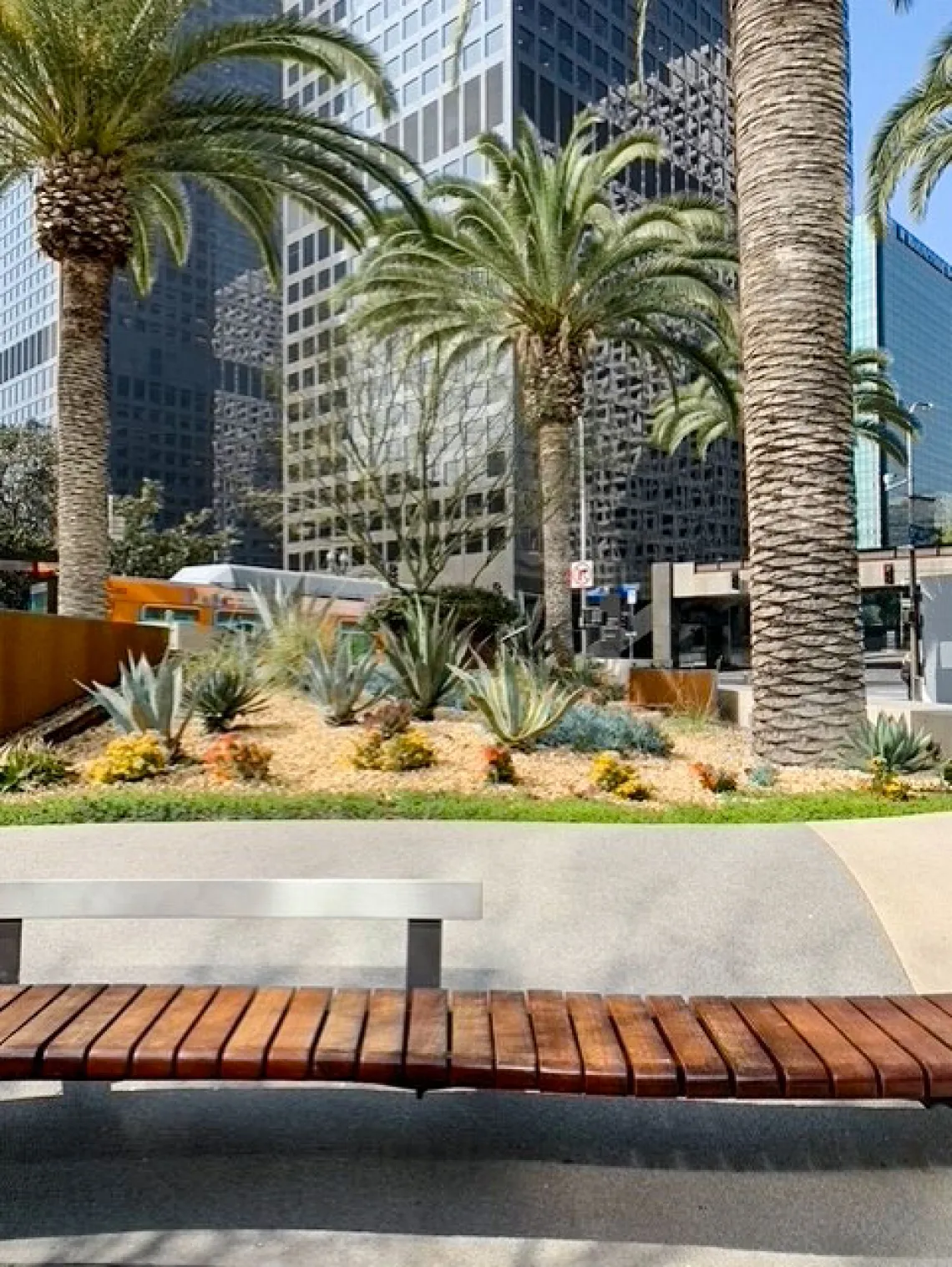
On the downtown Los Angeles walking tour. Photo by Irene Pineda.
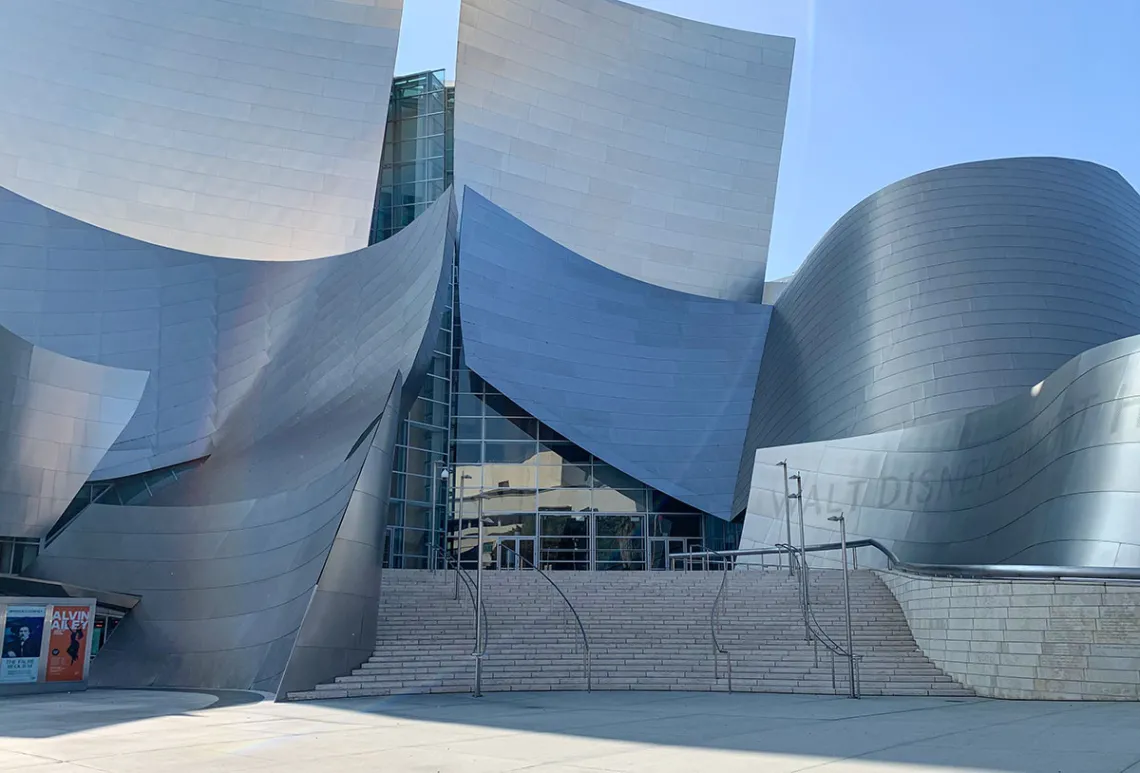
The entrance to the Walt Disney Concert Hall. Photo by Kendra Potter.
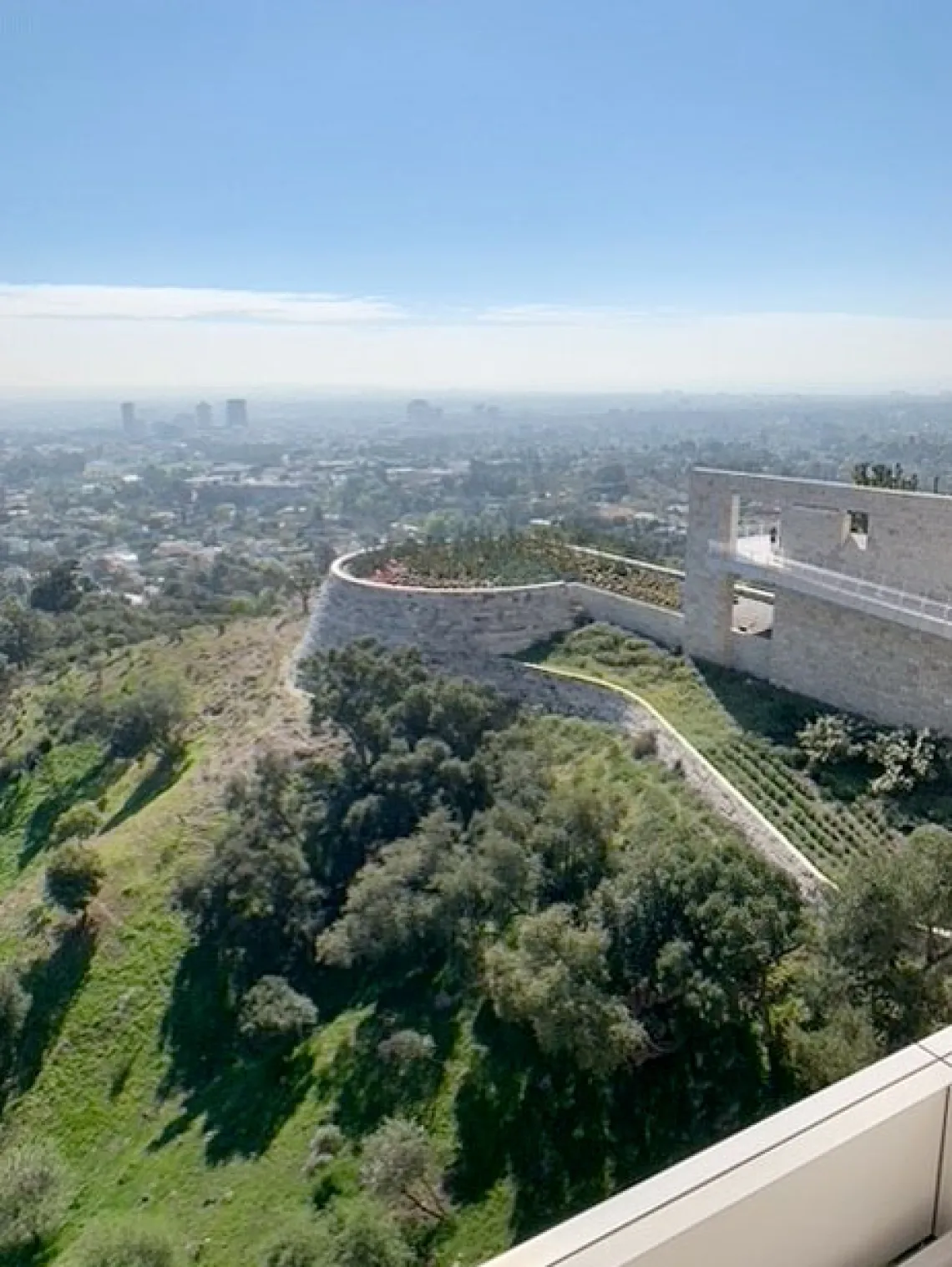
The Getty Museum overlooking the cactus garden and the Los Angeles basin. Photo by Irene Pineda.
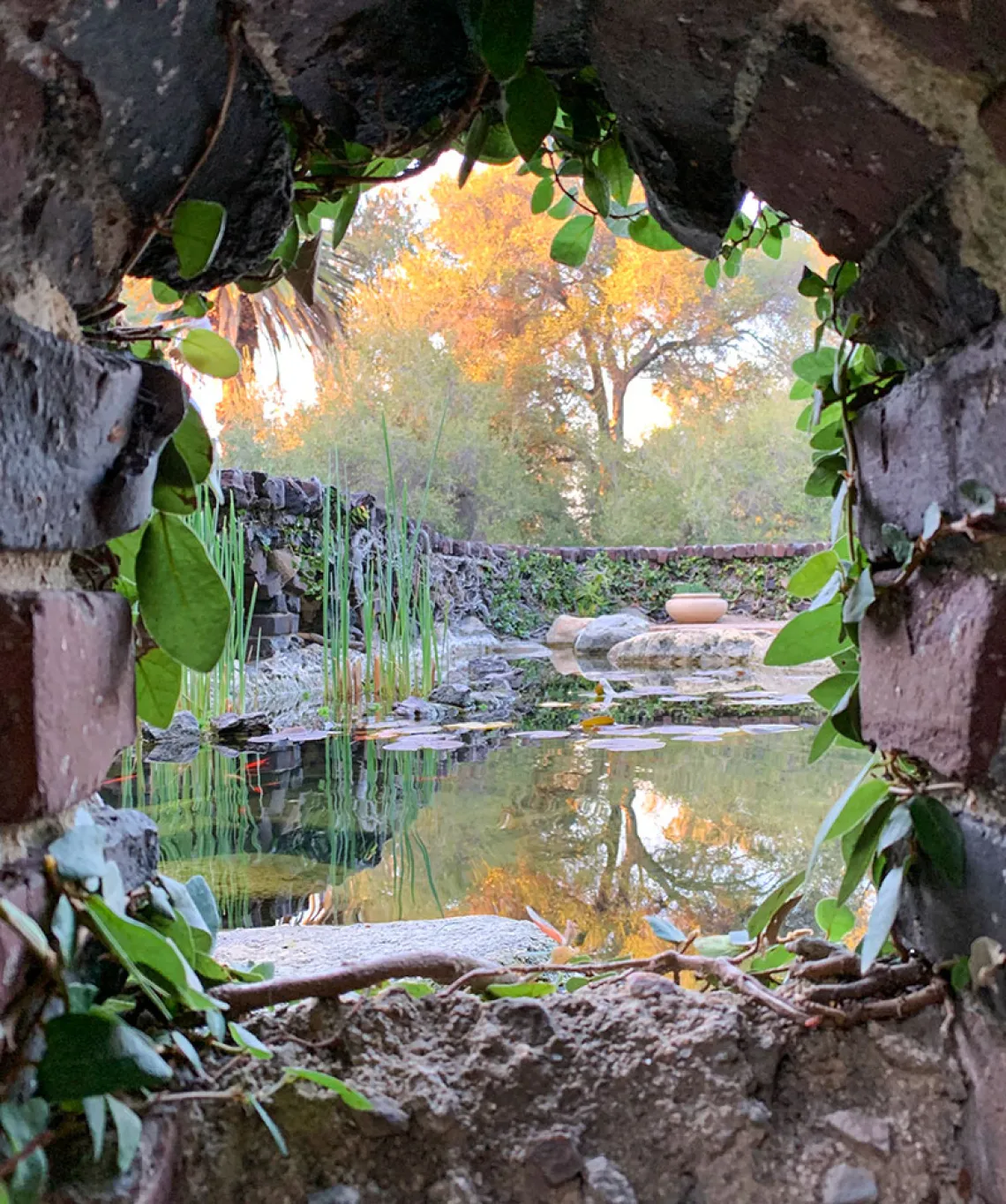
View of a koi pond through a hole in the wall at Gamble House in Pasadena. Photo by Kendra Potter.
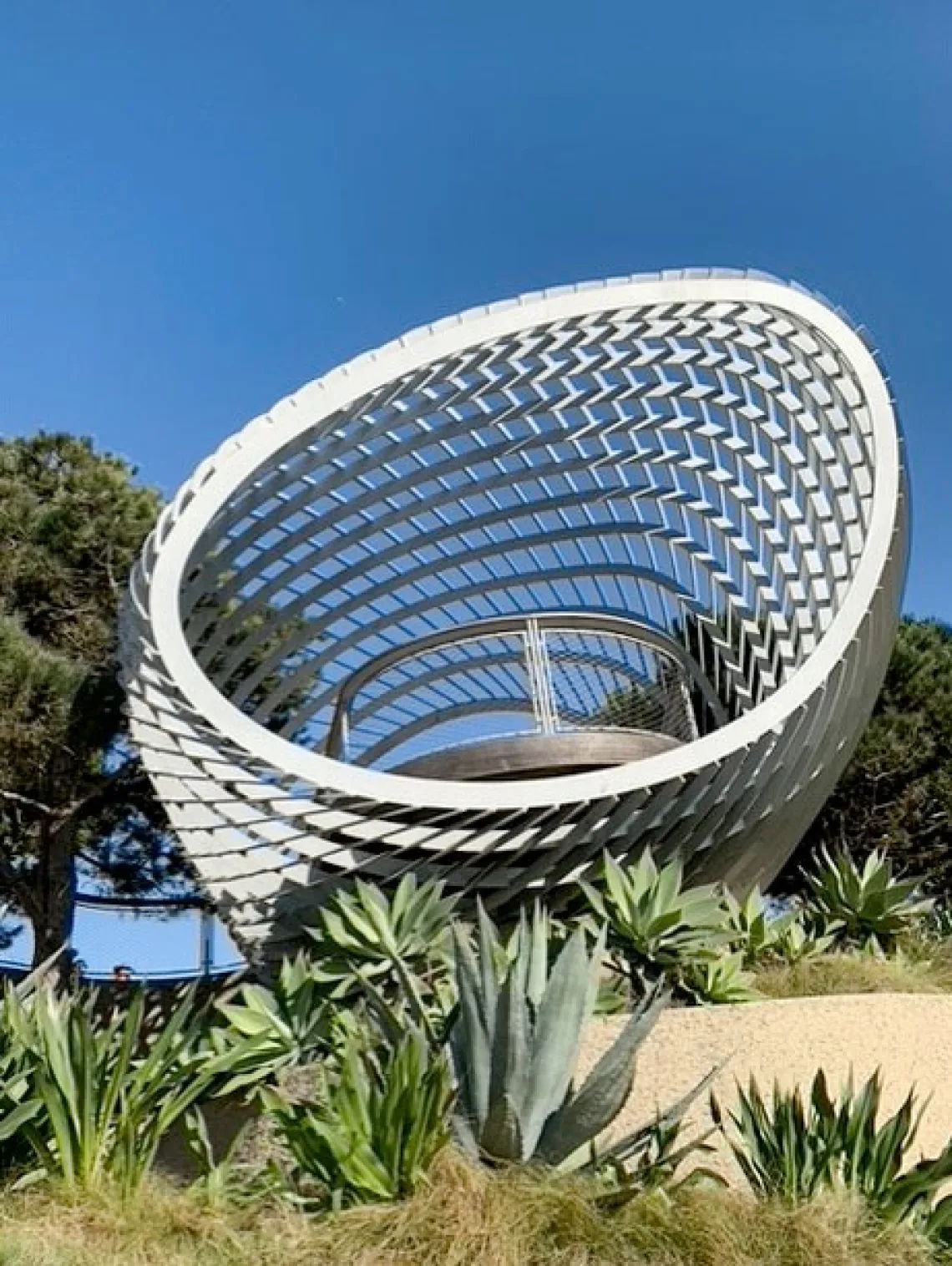
Overlook platform with a view of the Pacific Ocean at Tongva Park in Santa Monica. Photo by Irene Pineda.
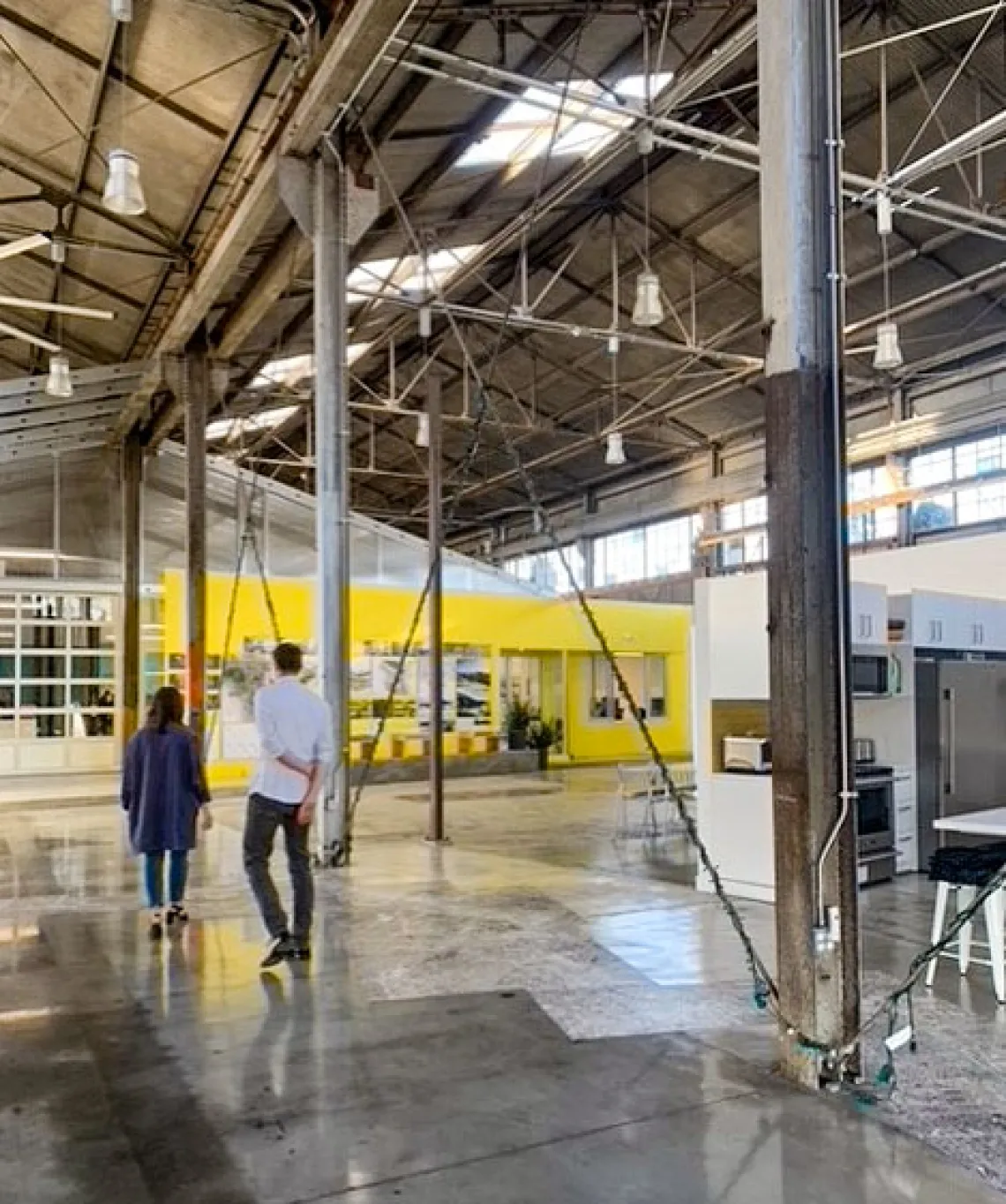
Interior of the Studio-MLA offices. Photo by Irene Pineda.

